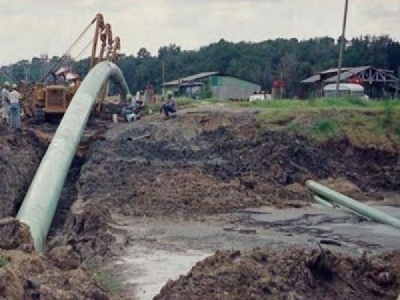
Posted on May 29, 2018
By Mary Landers, savannahnow.com
The U.S. Army Corps of Engineers and International Paper have resolved an issue about pipelines under the Savannah River that the corps previously believed would have to be relocated ahead of harbor deepening. IP had already removed some of its piping and the company demonstrated that the remaining pipeline was buried deep enough that it would not be disturbed by dredging.
“Following extensive efforts over the past year to accurately locate the pipes, a report was submitted to the Savannah District, US Army Corps of Engineers, in January of this year,” wrote IP spokeswoman Karen Bogans. “The report documents that the pipes are installed in accordance with the permits and are deep enough to be clear of the planned dredging. After their review of the report, the Corps of Engineers has confirmed our findings. We appreciate the cooperative approach demonstrated by the Corps of Engineers as we worked through this important issue.”
Harbor deepening will dredge the river to 47 feet from its current 42 foot depth to allow for larger more heavily loaded vessels to navigate the river with fewer tidal restrictions. An additional five feet is allowed as overdredge. The corps wants to clear the river of anything buried at a depth of less than 64 feet.
In about 1972 the company, then called Union Camp, trenched a reinforced fiberglass pipe into the river bottom to route mill effluent to Hutchinson Island. This 1972 vintage pipe was replaced with a 42-inch diameter coated carbon steel pipe in 1989. A parallel pipe bundle consisting of a 10-inch and 6-inch coated carbon steel pipe was also installed in 1989. All the pipes are located within the limits of an easement in the river granted to IP’s predecessor Union Camp by Georgia in 1972 for $5,000. That same easement prohibits IP from seeking state or federal compensation for having to move the lines. Commercial navigation takes precedence.
Based on a study the company had commissioned in 2014 the corps initially determined that large segments of the pipelines were shallower that the 64 feet and ordered their removal. Plans filed last summer with the Department of Natural Resources call for removing the old pipe and installing at a greater depth nearly a third of a mile of five-foot steel casing with a 42-inch steel carrier and conduit bundle.
But before the work began IP discovered documentation from the 1989 pipeline installation, and also commissioned several pipeline mapping studies. Using a smart probe for the bundle of smaller pipes and a remotely operated vehicle in the larger pipe the mapping study, conducted by Arcadis US, concluded the pipes were located at the proper depth.
“The 1989 As-built pipe profile, coupled with the 2017 mapping efforts, provide the most reliable pipe locations, and both confirm that the 6? and 42? pipelines comply with the 1989 USACE permit requirement of being below elevation -64 (MLW),” the report concludes. “In addition, the pipes are deep enough to satisfy the Savannah Harbor Expansion Project requirements of being below elevation -64 (MLLW datum), beneath the Savannah River shipping channel. IP-Savannah will continue to work to remove the 1972 pipeline, but are hereby confirming that recent detailed mapping efforts show both sets of 1989 pipelines are deep enough to comply with the original installation permit and were mapped at positions below elevation -64 (MLLW)”
The corps agreed.
“IP conducted additional surveys to locate the pipelines and provided a report with supporting data for the Corps to review,” wrote spokesman Billy Birdwell. “The technology and methods used to complete the new surveys resulted in more accurate data regarding the locations of the pipelines. This led to a determination that they are no longer an impact to the SHEP deepening work.”
Source: savannahnow





